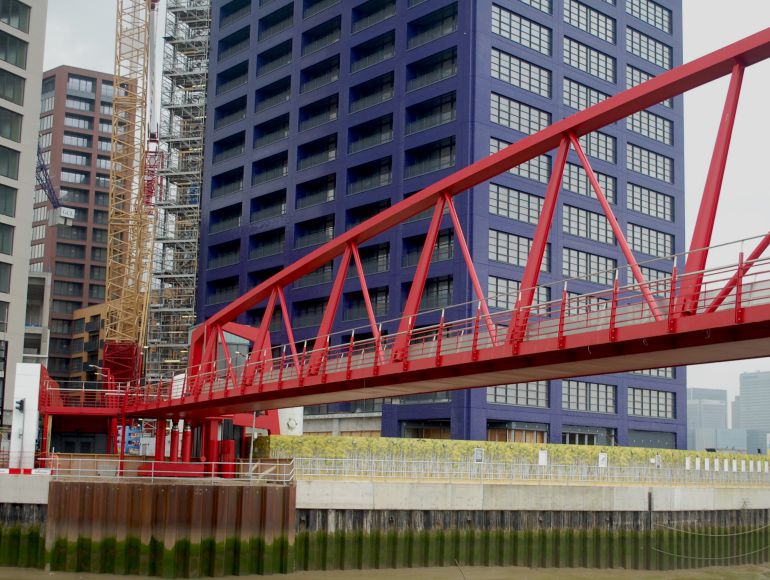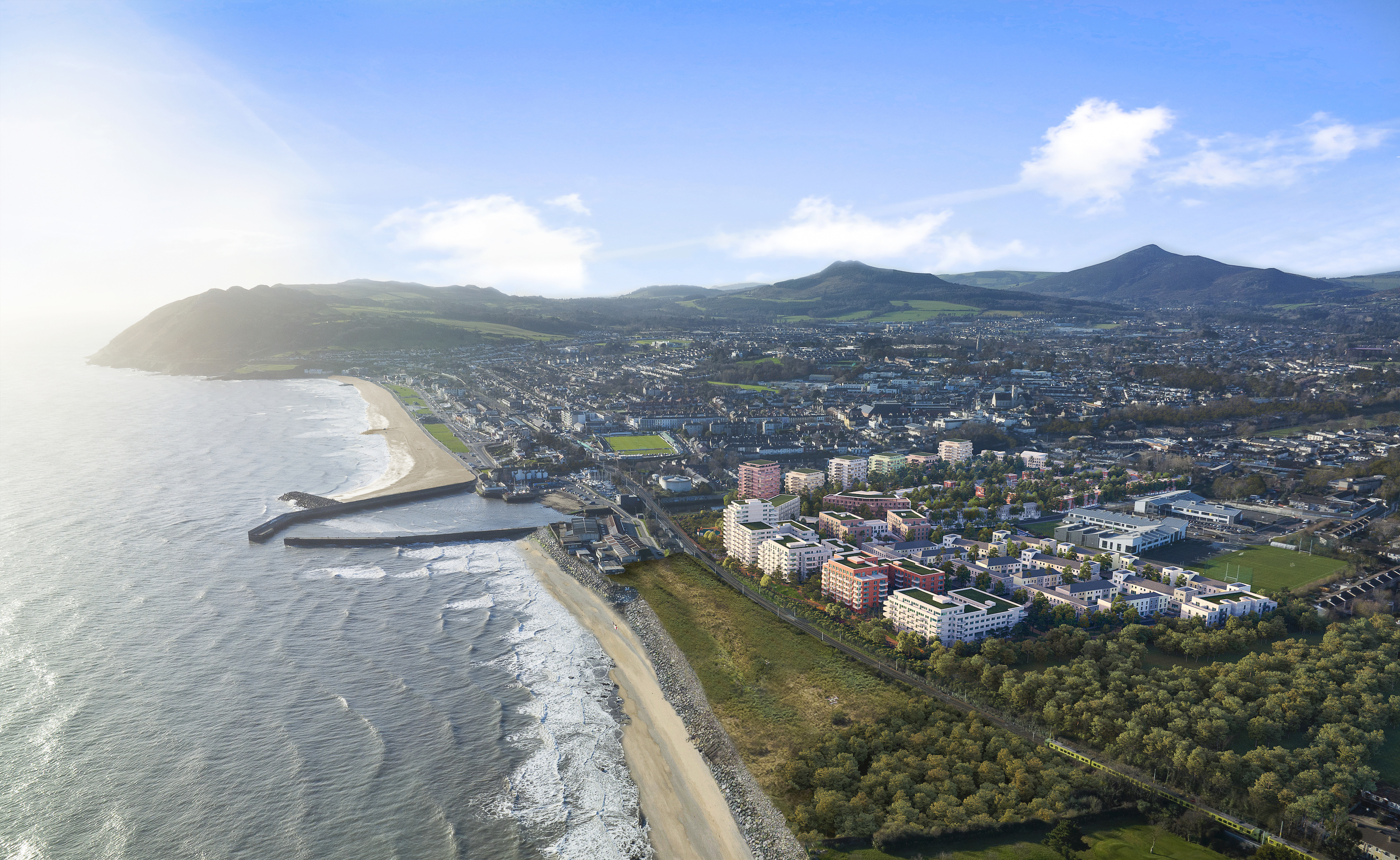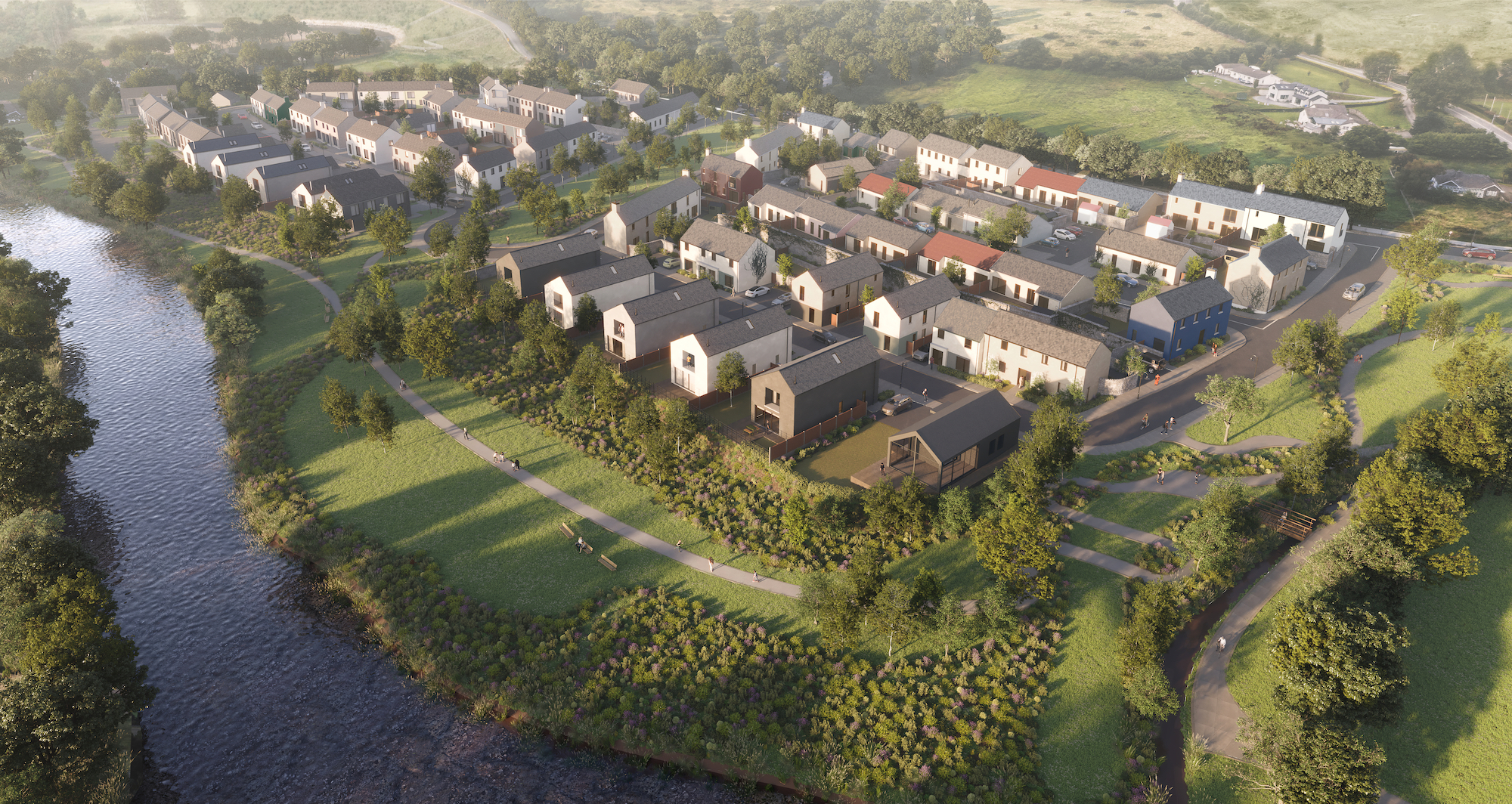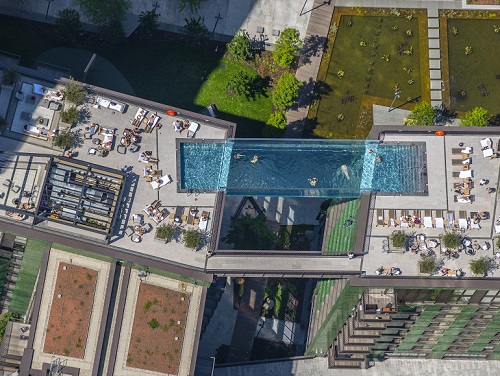Weekend walks - London City Island & Goodluck Hope
With spring nearly sprung, there’s no better way to discover one of Dockland’s most historic areas than on foot, starting and ending at Ballymore’s eponymous ‘red bridge’ over Bow Creek
Arriving at Canning Town station, start by finding the Bow Creek exit and before crossing the red bridge, give yourself a moment to admire the dramatic panorama of London City Island the other side of the water.
Before the bridge was built, the only way onto the ‘island’ was via Orchard Street where you’re now heading. If you fancy a latte and croissant set-me-up before you get going, drop by The Island Grocer by Ballymore, a chic Italian deli and café/restaurant serving London City Island’s new residents.
Here you can also pop into arebyte, an edgy art gallery whose upcoming exhibitions include Infinite Multiple and a unique evening celebrating the collaboration of food and dance featuring Mesa and Helen Cox. A short walk away, you will also find Trinity Art Gallery which launches it’s spring exhibition featuring artwork from Mayfair’s Pontone Gallery.
Culturally, London City Island is set to hum, with the arrival of English National Ballet and the London Film School, the latter in a new dedicated building on the southern edge of the site, which you pass as our walk takes us south towards the Thames and the entrance to the East India Dock Basin.
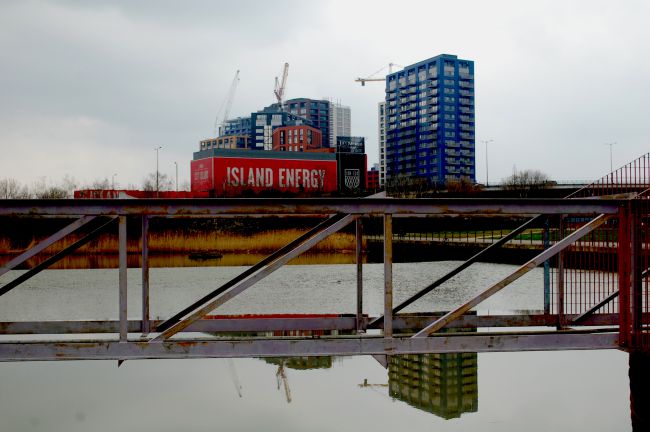
London City Island from East India Dock Basin
To get into the Basin, turn right through a sculpted wrought-iron gateway to enter a broad nature reserve and waterway where the River Lee flows into the Thames. Built to serve the East India Company, the dock was constructed in the early 19th Century and today offers probably the best view of the O2 Centre across the River.
A few steps on from the Dock at Virginia Quay is another major historical landmark, the Virginia Settlers’ Monument, commemorating the English Pilgrims who set sail from here back in the 17th century.
Retracing our steps back to Basin gates, the walk continues towards Trinity Buoy Wharf along Orchard Place, where you spot the palm trees of the Goodluck Hope marketing suite, and a vast 5-ton navigation buoy, salvaged by Museum of London Docklands.
Dominating this once-cobbled thoroughfare are a few old docklands warehouses, still bearing the names of their original owners – Mathers Whale Oil Extraction and Ditchburn and Mare Ship Builders, founded in 1838. A little further on, another old building, now The Electric Shop, announces the right to solemnise marriages since 1949.
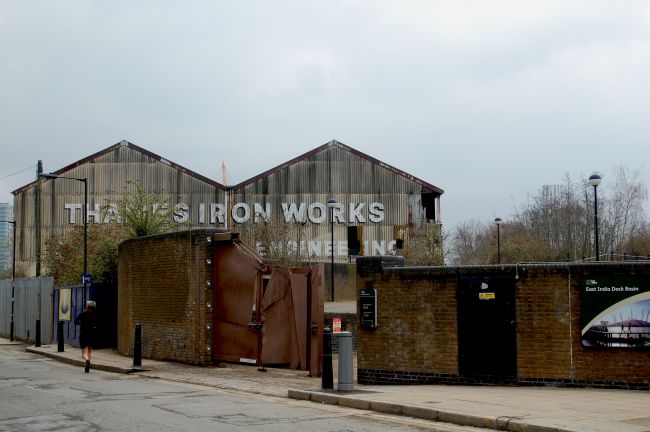
Old docklands warehouses at Goodluck Hope
Finally our walk ends at Trinity Buoy Wharf, today a thriving waterside ‘village’, comprising the Royal Drawing School, housed in a building made entirely of old shipping containers, office space for ‘creatives’ built of the same, The Chainstore Gym and Parkour Academy, next to Andrew Baldwin’s fabricated steel sculpture workshop, the Faraday Lighthouse where the inventor carried out his early experiments and the London Lighthouse 95 audio recording studio, housed in a luminous red lighthouse vessel, moored on the quayside.
TBW provides a useful free map that has all the key sights that you can pick up as you arrive.
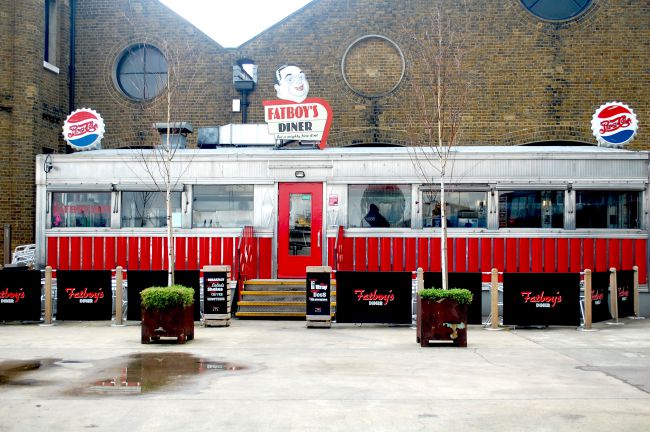
Fatboys at Trinity Buoy Wharf
And if you’re hungry, there’s always Fatboys Diner – ‘For a Mighty Fine Dine’, in a classic 1950s-style American chrome-and-neon diner with counter stools for hamburger and fries, hot dogs and milkshakes.

